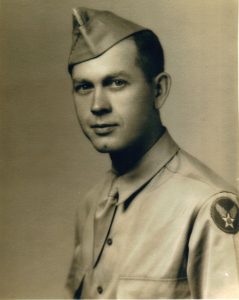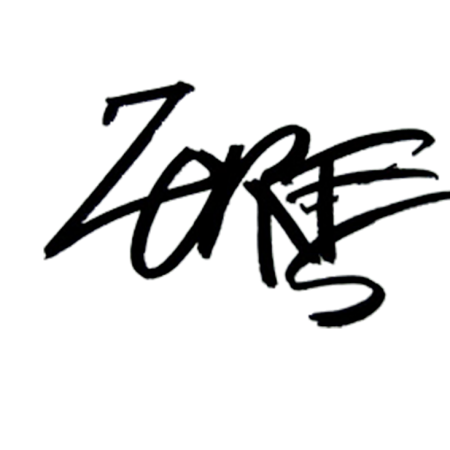From the Journal
Of Milford Zornes
WWII Through the Portraits by Milford Zornes
 When Milford Zornes passed away in 2008 he left behind a wonderful collection of material about his WWII experience in China, Burma and India (CBI). Most importantly he left behind 40 to 50 portraits of soldiers. Researching these soldiers would weave a story of where Milford was in CBI, some of the things he did and the people he interacted with. One of the purposes of having artists during the war was to record events in paintings and drawings. The portraits are a lasting record of individual soldiers and in some cases the part they played during the war.
When Milford Zornes passed away in 2008 he left behind a wonderful collection of material about his WWII experience in China, Burma and India (CBI). Most importantly he left behind 40 to 50 portraits of soldiers. Researching these soldiers would weave a story of where Milford was in CBI, some of the things he did and the people he interacted with. One of the purposes of having artists during the war was to record events in paintings and drawings. The portraits are a lasting record of individual soldiers and in some cases the part they played during the war.
On some of the portraits Milford put quite a bit of information and on others none at all. In one case he wrote just a nickname, in others at least a last name and some a full name and even the city they came from and an address on occasion. It has proved possible to research and find most of the soldier’s families when there was at least a last name on the portrait.
In late 1942 Milford Zornes was drafted into the Army/Air Corp and he would turn 35 years old during Basic Training at March Air Base near Riverside, California. During his stay there he managed to have enough time to do portraits of a few of his fellow soldiers. Only 4 or 5 survived and are in a sketch book that Milford designed a special cover for. The sketch book is still fully intact, with some minor defects, after seventy plus years.
When Milford passed away in 2008 his drawings, paintings, military and personal papers were gathered up and put in storage. Eventually they were sorted through. That was the first time Maria (Milford’s daughter and my wife) and I recognized how many portraits he had done and how good his portraiture was. The portraits sat for several more years while we took care of the estate after Pat Zornes passed away in 2009. It wasn’t until about 2013 that any effort was begun to figure out what to do with the portraits. Finding either the soldiers or their families would be a tall order after 70 years, none the less, that is what I decided to do.
Not only do the portraits tell us about where the soldiers were in CBI but it also tells the story of some of the places that Milford traveled with the War Correspondents who were recording the war for the news. We know that Milford spent some time with Merrill’s Marauders in Burma. He did portraits of at least three of them including Roy Matsumoto who is in the Army Ranger Hall of Fame and was the recipient of the Legion of Merit. (Milford had a photo of Roy receiving this medal and only a photo of the portrait he did of Roy. The original has never been found.) Two others were photographers with this unit. There was a “colored” engineering unit helping to build the Burma/Ledo Road from India into China and Milford did portraits of a number of them. Only four of the portraits are of women. Two of them were Red Cross Volunteers and the other two were officers who were nurses. The others seem randomly done which fits in with Milford’s frequent travel all over CBI. In addition to the portraits of soldiers Milford also did portraits of local people in CBI. Like the other portraits some have names (there is never an address or city) and others nothing. He did a well – documented portrait of a Chinese War Lord while members of the U. S. military brass stood behind him and watched. From this event Milford said “With enough pressure you can often get a good result”. The military felt they got a good result and apparently the War Lord was happy because he gave Milford his choice of a scroll from his collection of Chinese scrolls.
My college degree is in History. I left that behind to work with delinquent kids for 30 years. I developed an ability to ferret out information from all sorts of sources over the years of working with kids. I was a manager so I learned to organize projects, work with small groups of people, and also developed an interest in detail. A combination of things I learned over the years helped me to find a final resting place for these portraits.
Where to begin. These soldiers would more likely be deceased after 70 years, so I would be looking for families. I needed background information. I found Carl Weidenburner’s CBI website and I got in contact with him. I read as much of the information on his extensive website as I could and also used his search engine to see if my portrait soldier would show up. I even used Google to see if I could find someone. On occasion it did which gave me additional information. I went to whitepages.com, put in names and addresses, including cities, and started making phone calls and writing letters. (It reminded me of making cold calls to homes when I was in the insurance business.) I often had to eliminate people who did not seem to fit the profile I was looking for. I learned to look for similar names to the soldier including first names and even middle initials. Sometimes I just flew by the seat of my pants but it worked. I was successful enough to learn to trust my inner judgement. Once I got the least bit of information I followed it. Sometimes I was successful and sometimes not but enough to keep me inspired and going forward. I wrote letters to local newspapers, called VFW Posts and anybody else I thought might be helpful. I was once referred to a funeral home where a lady worked who knew the family I was looking for. Never pass up a lead. I also read a lot of books about WWII in CBI. It helped me understand what soldiers were doing, what units they belonged to and where they might be. All the information I could gather proved to be really helpful.
Eventually I added a friend who was a genealogist. I gave her names and whatever other information I had developed and she gave me back leads. I developed a pretty good instinct for knowing when I was close to finding a family. Over several years we found 10 families and returned portraits to them. It was slow going and time consuming and I felt the need to move ahead quickly as the children of these WWII Veterans would be in their 70’s.
I also found a person in the Department of Defense who is a civilian Historian. I discovered him mostly by accident which was also not unusual in this project. I gave him names and whatever else I had. He gave me military records, newspaper articles and obituaries. Sometimes he gave me a few options which I would follow up on. He was a major addition to our search group (now 3). We went from 10 to 20 fairly quickly. I even enlisted several of my cousins to help me find families in their local areas.
I often found a reluctance from the families to want to talk to me. I think there are so many scams out there that people are just suspicious. I am sure it is also hard to believe that someone would call you out of the blue and wanted to talk about a portrait of a relative from 70 years ago. I even had people ask me how much I wanted for the portrait. For the record no one was ever charged anything. Maria and I have even paid the postage when we send the portrait to the family. When I find a family of one of these soldiers I try to fill them in with what I know about where Milford met them and what they might have done during the war. Once I found a family the response has been varied. Some responses were terribly underwhelming. I asked families to please let me know when they got the portrait and in a number of cases I had to do a follow up to be sure they received it. They did not seem to care one way or another. Other families have been overjoyed to have a portrait of their loved one. One person had a scheduled flight into San Francisco and made special arrangements to come to Sacramento to have lunch with us and receive the portrait. At least one family has become personal friends. One person told me how important it was for his father‘s great, great grandchildren to see the portrait and remind them of his service. Maria and I had the honor to go to breakfast with Roy Matsumoto and his family in Berkeley and we have stayed in touch over the years. I have told families that I hope they would frame the portrait and put it in a place of honor in their home and some of them have sent me photos of the framed portrait. They always look really special in the frame. In searching for families I was astounded how much information I could find on families. I found the businesses they owned, how many kids they had, the divorces they endured, and the number of places they had lived in since the war. One thing I found that disturbed me was the possibility that many of these veterans of WWII came home emotionally injured from their war experience. It those days they called it “combat fatigue”. Today we would call it PTSD. In either case these men had emotional issues when they came home that their families experienced right along with the veteran. I spent quite a bit of time reading about Merrill’s Marauders in Burma. The living conditions in Burma were terrible. It was mountainous, incredibly humid and the area was thickly covered with trees, foliage, poisonous snakes and even tigers and then combat was added in. That these conditions changed men’s lives after the war is predictable. I wondered if the reception I received from families could be conditioned by these events.
I have my favorite finds of course. Some involved the actual search and the unique things I found. One was a couple who married in the Catholic Church in India after their trip to CBI on the same ship. One was having just three letters on the portrait and just by dumb luck finding this person. Probably the most important thing is the feedback I received from families. Some families were truly surprised and excited to be able to “see” their soldier again and these carry a special memory for me. Each portrait contains its own mystery and fun in uncovering something new, hoping to find a family who will value and honor these portraits of our WWII veterans.
In 2018 I will make the effort to get the rest of the portraits to families. Those that we cannot find or which have no information on them will probably be donated to a WWII Museum where they will be available to the public.
– Hal Baker
Get In Touch
We would love to hear from you. Send us a message.
